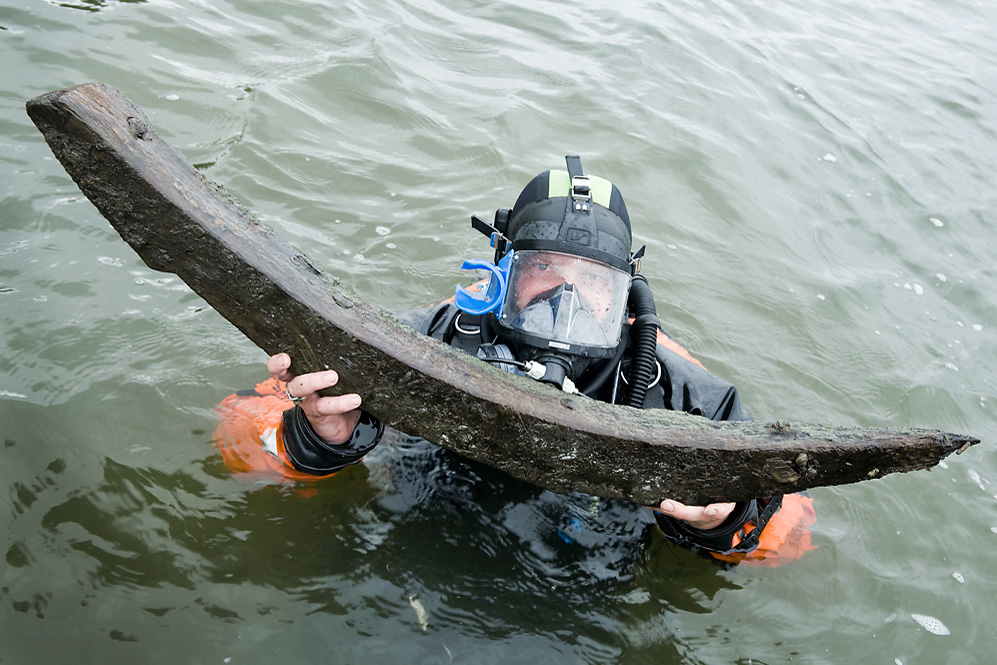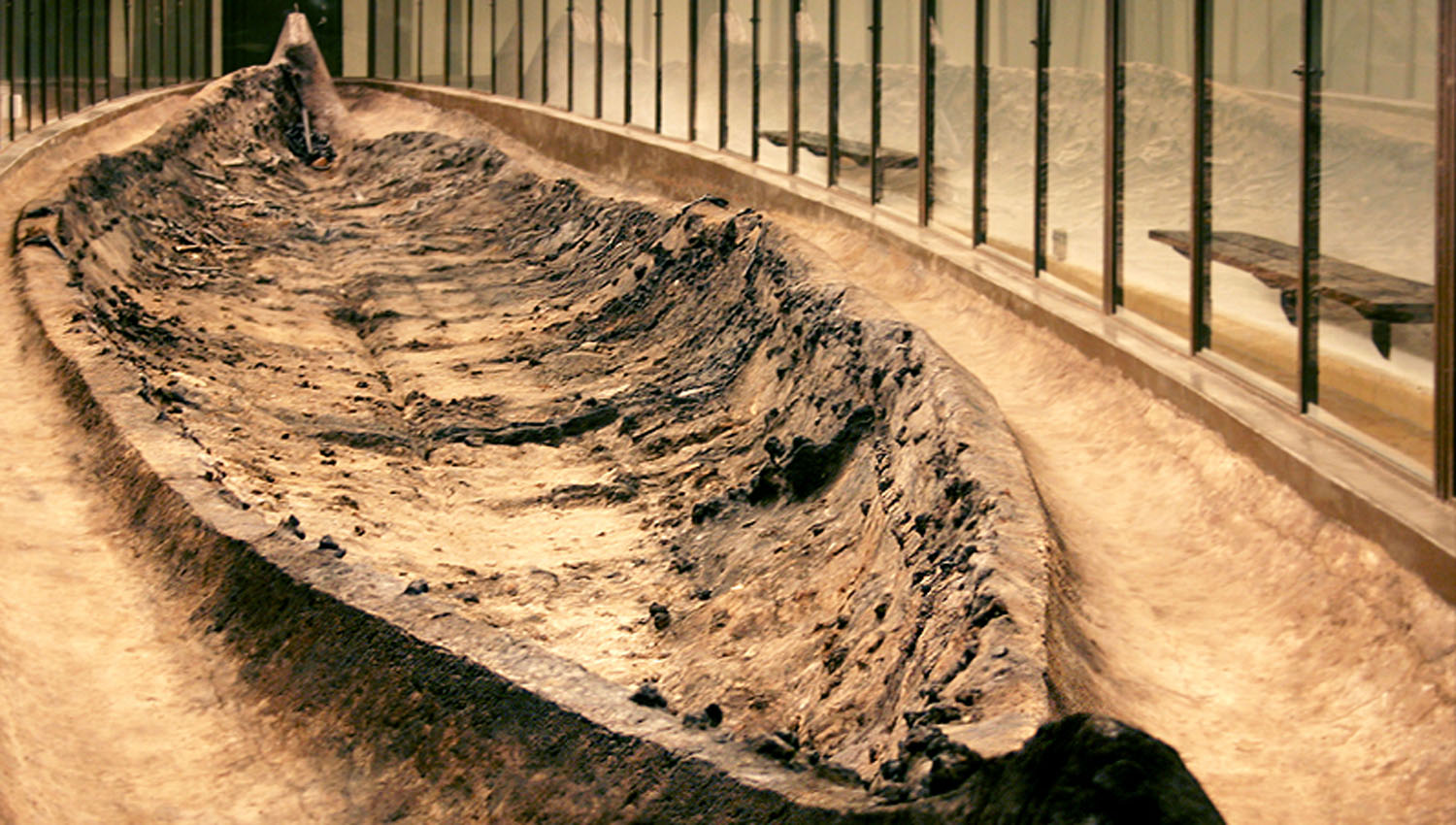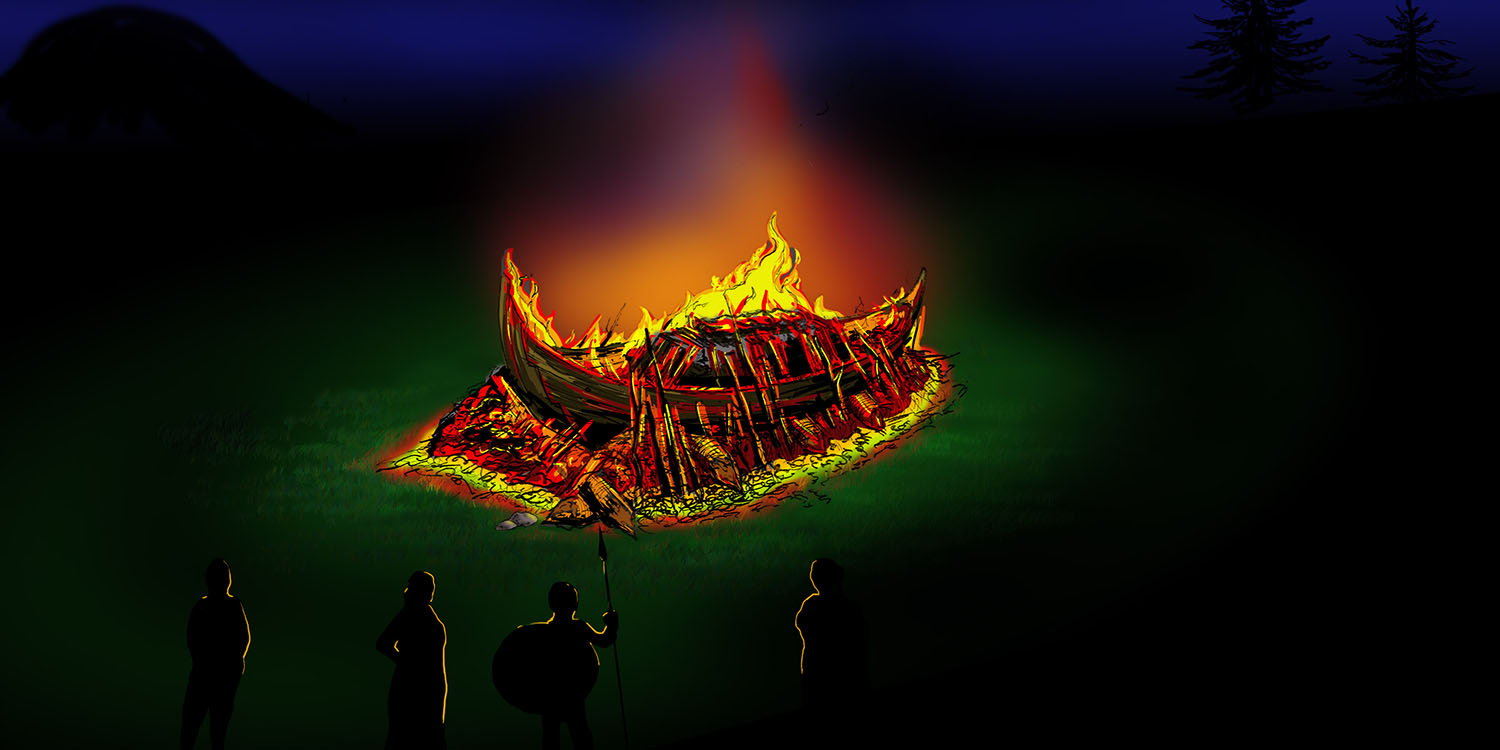
There are several known Viking harbours around the Baltic Sea that contain everything from ship rivets to well-preserved ships.
Anyone who travelled to Birka came by water, and several traces of this seafaring remain to this day.
Part of a frame was discovered on the seabed in 2008 and was salvaged in 2010. Based on the size of the frame, it must have come from a ship that was 10–15 metres long. There are several other finds from the seabed off Birka, such as two anchor stones that have ropes still attached to them. You can read the full report on maritime Birka here (in Swedish). Recent investigations just north of the Viking city have also been able to identify a Viking shipyard site. At the former shoreline, archaeologists have found the remains of a building and many tools and utensils that were used to repair ships.
In Sigtuna, remains of boats and ships have also been found that contain large quantities of rivets, and even wood scraps. The finds include ship artefacts like frames and planks, as well as a few larger ship remains. Most of the ship’s parts are made of oak, but other types of wood are also represented. Since oak is such a strong material, wood from decommissioned ships seems to have been reused as a building material in the city, for example as street pavement.
Poland is home to a Viking ship find in the Gulf of Gdansk. The ship was discovered by recreational divers in 1977 and followed by many investigations.
The wreck, which has been named “Puck 2”, is dated to the first half of the 10th century and is better preserved than contemporary finds from Scandinavia. The ship was originally about 20 metres long and 2.2 metres wide. There are both differences and similarities with the Scandinavian finds. The wood in Puck 2 is joined together with treenails instead of iron rivets, a sign of Slavic shipbuilding traditions. But the builders of Puck 2 were influenced by Scandinavian shipbuilders, which one can see from the mast. On Slavic ships, the mast was usually attached to a special transverse frame. But the mast on Puck 2 was attached to a so-called kelson, a piece of wood that runs along the keel, as on Scandinavian ships.
One of the key trading posts of the Viking Age was the Danish town of Hedeby, now close to the German town of Schleswig. Divers surveyed the harbour in 1953 and found a shipwreck that could not be investigated archaeologically until 1979. The ship turned out to be a longship (a warship). It is 30.9 metres long, and only 2.7 metres at its widest point. These proportions make it the narrowest known ship of the Viking Age.
No insight into shipwreck remains in a harbour environment is complete without discussing the finds from Roskilde Fjord. At the end of the Viking Age, a barrier was built to keep away enemy ships outside Skuldelev. First, four ships were filled with stones and were then sunk, and a few years later two more ships were sunk. The ships – warships, merchant ships and a fishing boat – give us a good idea of the different types of ships that existed during the Viking Age.
Langskibet fra Hedeby havn (in Danish)
Puck 2 - Et slaviskt langskib (in Danish)


